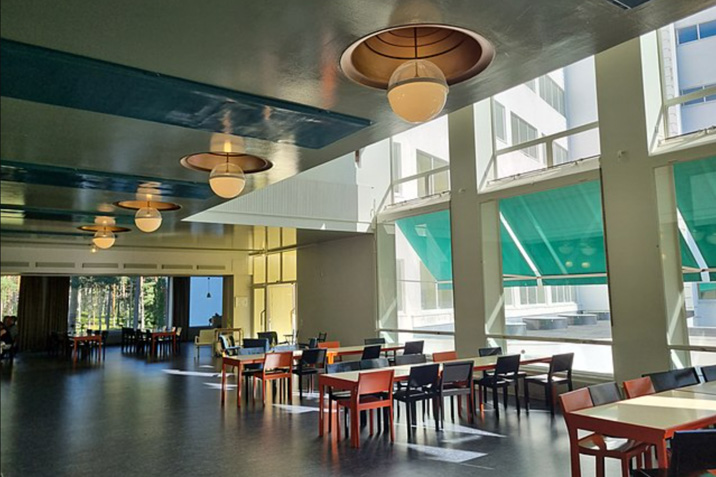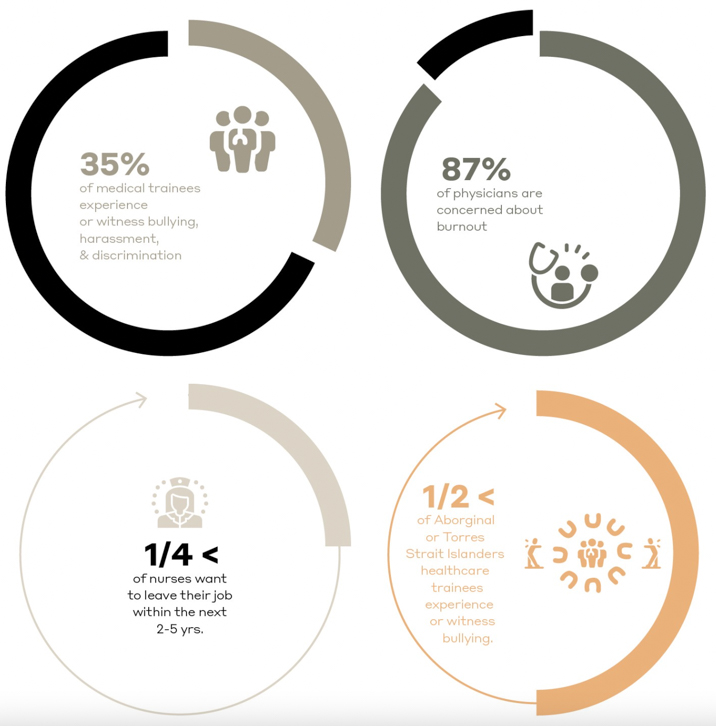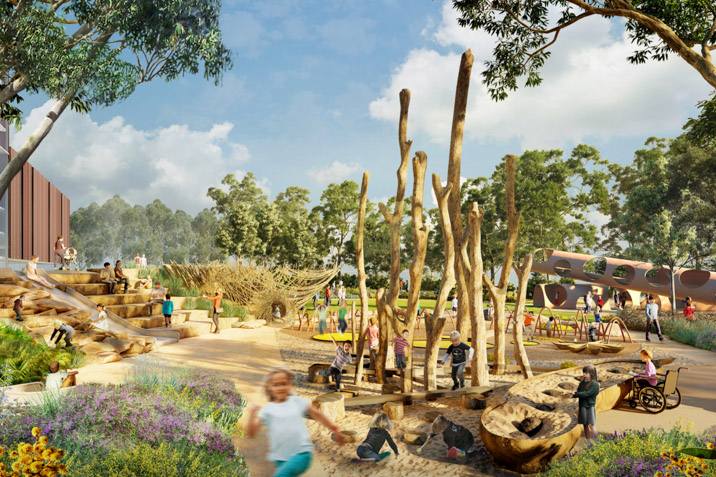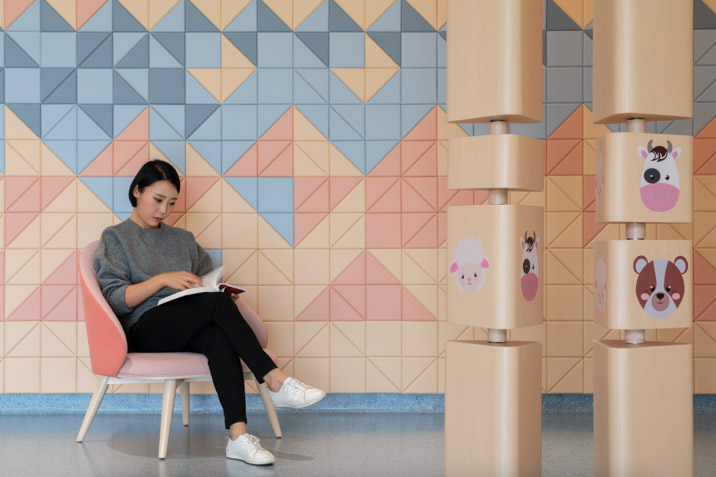The way we design for care must be uprooted. Changing needs, new technology and updated models of healthcare delivery mean that it’s time to fundamentally change our healthcare infrastructure to focus on people over systems.
The way we design hospitals and health precincts must be the result of empathetic enquiry into what people feel and respond to and how they need to be cared for – not perceptions of a broken system. The time to pivot to a model of people-centric care driven by human impact and behaviour is here.
Hospitals, historically
When we think about hospitals, we’re likely to imagine disease, pathology, containment, and suffering. A product of the industrial revolution, hospitals as we know them were inspired by the factory model to be functional, sterile, and efficient – supporting a system of care that treats illness instead of the whole person, defines success in terms of bed occupancy, and places the system above the users.
Historically, we’ve done better. In the 1920s, sanatoriums were built around access to sunlight and fresh air, orienting rooms and balconies to maximise exposure. Bright and clean, these spaces were designed to function as medical tools themselves. This approach saw the design reduce noise, facilitate cleaning, optimise daylight, and prioritise social interactions – showing care for its ecosystem of patients, nurses, doctors, and other workers.

The toll of the system we have
As it is today, hospitalisation demonstrably exacerbates patients' emotions and increases feelings of depression and anxiety, impacting their ability to cope and adjust. This stress is also felt by families and carers, who report higher levels of anxiety, social isolation, and fatigue. Bullying, discrimination, and burnout is rampant for healthcare professionals, and deeply detrimental to mental health, decision-making, and staff retention.
This toll is even more damaging for First Nations people. The percentage of Aboriginal and Torres Strait Islander people reporting being treated with respect and dignity at the hospital is significantly lower than non-Indigenous patients, while more than half of First Nations healthcare trainees experience or witness bullying. Indigenous people are also less likely to present to or stay in hospital, risking the need for more elevated care later and indicating a worrying lack of cultural safety in our health system.
These problems are not individual issues but symptoms of an organisational concern that affects our ability to deliver quality healthcare. They are experiences that reinforce the urgency of our need to rethink what ‘inclusive’ healthcare means in practice and fuel for us to change the conditions that prevent true equality across the healthcare experience.

Design’s impact
Design impacts healthcare because it influences behaviour. Though change requires input industry-wide, a designers’ role is to prioritise people-centric care through the creation of spaces that deeply consider their influence on each users’ personal health and wellbeing.
These changes to do not mean higher costs, they simply indicate a reorganisation of priority that considers user experience first as a way of informing outcomes. Emphasis on the individual, customisation, and comfort sets people-centric care apart as the next step in healthcare design, impacting behaviour for the better.
The specific experiences of First Nations people must be met with respect, deep empathy and great behavioural change. Cultural safety is for everyone, and design’s impact can be felt via the creation of spaces that focus on the comfort everyone deserves. Its these shared needs – for shelter, nature, safety, sensory input, and community – that should influence the kinds of spaces our hospitals will become. To serve our diverse, multicultural community well, this approach of recognising and responding to our human commonalities rather than our differences, results in a space that feels intuitive and welcoming for all.
The people-centric precincts we need.
Healthcare spaces developed around people-centric care improve lives by dissolving barriers between people, disciplines, facilities, spaces, and cities to create people-centric precincts that foster social and psychological wellbeing alongside physical recovery. A project that embodies this goal is Adelaide’s New Women’s and Children’s Hospital (New WCH), which will be purpose-built for the health and wellbeing of babies, children, young people, women, and their families.
Responding to feedback from patients, staff, and clinicians, the New WCH features a dedicated helipad, an ICU for women, extra beds, and critical care services all on the one floor. These practical additions allow people to arrive, rest and recover in spaces that have been designed to promote wellbeing by being as seamless and gentle as possible. Ultimately, the design allows for age-appropriate paediatric, women’s maternity, neonatal and gynaecological care for our most vulnerable in purpose-built spaces that feel safe.
Located near the Royal Adelaide Hospital and Adelaide BioMed City, the New WCH maximises the existing precinct’s potential by strengthening connections between buildings that provide clinical outcomes – like proton therapy treatment. This cross-locational care means medical needs can be met with the appropriate level of technology regardless of where a patient checks in. As a result, patients and their carers can move around the precinct to access specialist care and research, while staff benefit from closer connection to tertiary and quaternary services.
Designed to be keenly interconnected with Adelaide itself, New WCH is in the city’s north-west corner. Sitting at the intersection of Karrawirra Pari (River Torrens), the city and the parklands, the new hospital forms connections at a pedestrian level by linking with the CBD’s grid, integrating with public transport, and improving access to the nearby Park Lands. This connection to nature pays respect to Aboriginal connection to Country, and improves the experience for all by extending the site through physical links and views to Tulya Wardli (Bonython Park) and Karrawirra Parri. A new playground creates more green space for patients, families, and workers to rest, wait and recover.
Ecosystem trumps system
Health precincts are multi-disciplinary. Part workplace, research facility, accommodation, sanctuary, café, school and playground, these spaces facilitate a vast spectrum of experience. Taking a people-centric design approach means reframing healthcare as an ecosystem in which patients, professionals, students, families, and the community work together in harmony.
The built environment is a key character within this ecosystem. When place is understood to impact outcomes as much as people do, emotions and behaviour improve. Connection to nature, daylight, art and symbolic or spiritual objects alongside considered lighting, wayfinding, access, and environmental control alleviate the higher levels of anxiety and fatigue felt by all users.
At Xian Angel Paediatric Hospital, colours, shapes, and textures are used to create positive distraction for worried children, families, and carers. Gentle, easy to navigate and full of natural light, these spaces feel playful, uplifting and fun – inviting users to move and explore much more than traditional waiting rooms. Though small, these changes the understanding that hospitals must be gentle and encouraging places fit to deal with the unavoidable strains of the hospital experience in ways that put people first.

Communities of care
People-centric design benefits the entire community. By appreciating a place’s cultural heritage, demographics, landscape and culture, a health precinct surpasses the role of landmark. Instead, they can leverage their site and surrounds to become deeply embedded into their communities as places of sanctuary, growth, inclusion, and opportunity.
Located directly on the banks of the Clarence Valley River in New South Wales, Grafton Base Hospital required a masterplan that allowed it to provide healthcare, professional education, and key worker accommodation. Located in a flood zone, it needed to function independently if it became waterlocked (Fig. 12). This meant that the project needed to be self-sufficient as well as highly accessible to the community in a crisis. Ultimately, the design team approached the project in the same way they’d approach the design of an island village.
A village is nothing without a strong and healthy community, so Grafton Base Hospital needed to extend its roots. By fostering partnerships with regional industry and existing healthcare facilities, the masterplan provides the community with opportunities for education, research, and employment. The hospital is easy to find, straightforward to navigate, and has plenty of shelter from the sub-tropical Grafton climate – meaning this “hospital in the park” is as much a civic gesture as it is an evolving precinct.
We find Grafton Base Hosptial at the nexus of the Bundjalung, Gumbaynggirr and Yaegl nations, all of which have distinct Dreaming, language, and cultural protocol. Across a series of workshops with Aboriginal knowledge holders, designers were able to learn about the lands’ stories and significance. These talks and walks on country taught the team how art, native flora, cultural medicine, connection to the water and space for ceremony could be integrated to best serve the areas’ unique population.

Un-stick the system
Our healthcare system needs healing itself, and the medicine lies in an empathetic approach that finally places people ahead of a system that no longer serves them – healing wholistically instead of simply treating the primary ailment.
In the built environment, hospitals are some of the most direct examples of design’s impact on communities across generations, so people-centric care is an approach that is not only smart, but necessary for a better future. At the end of the day, health is a basic right for every human – and we need human spaces to honour that fact.
This article was written by Woods Bagot's Tess Dolan and reposted by Architecture & Design.

